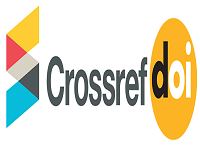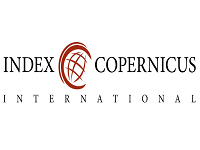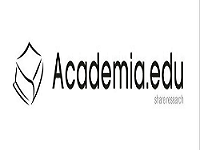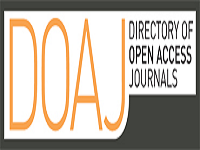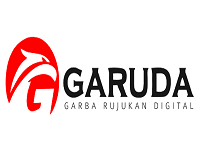E ISSN : 3090-6261 (Online)
Author Guidelines
Introduction
International Journal of Economics and Business Management (IJEBUM) is an online platform that provides facilities for Students, Researchers, Multidisciplinary, Engineers, and Professionals to publish high-quality papers that have gone through a review process according to research principles. This journal publishes original research, surveys, and review papers on Management, Marketing, Business, Finance, SMEs, Entrepreneurship from all over the world. IJEB covers comprehensive cutting-edge trends of economics and business research and will be published quarterly in February, May, August, and November
General Guidelines
General guidelines for writing in International Journal of Economics and Business Management (IJEBUM) are as follows:
- Written in English
- The length of submitted paper is at least 6 pages and no maximum pages.
- Make sure that your paper is prepared using the in International Journal of Economics and Business Management (IJEBUM) Template (Latex or docx) and Copyright Transfer Form when if it accepted
- At least 20 references with 80% coming from the original research article (Journal)
- Willing to make improvements at the pre-review stage, a maximum of 10 days after the pre-review was carried out
- Guidelines for The Manuscript Body Text
Scientific articles will be published in the International Journal of Economics and Business Management (IJEBUM) must follow the rules of writing on the paper body. The rules follow the pattern of IMRAD (Introduction, Method, Result, and Discussion) added the last section is conclusion section.
Title: The title should be concise and indicate the identity of the subject, the research objectives, and keywords. Titles may be no longer than 100 characters.
Author name: The author's name without academic degrees and not preceded by the word "by" followed by the name of the institution, address of institution and contact email.
Abstract: Abstract should describe the entire content of the article with maximum of 250 word. It is not allowed references to figures and tables. it is written in a straightforward, concise, and must include:
- Background (optional, one or two sentence)
- Research objective
- Method
- Result
- Conclusion
Keyword: Use keywords can describe the content of article. It is written in 3 to 5 words.
Introduction: Basically, in the introduction provides general background research, literature review (state of the art), originality of research (gap analysis), and research objectives. In the literature review, there are at least five articles reviewed briefly that can justify the novelty of the research.
The art of Research: The point of the art of research is an explanation of the literature or theories supporting the research and several research approaches that are carried out to reveal the phenomena that exist in the research.
Method: In the methods section provides a summary of the methods used, such as the subjects studied, tools and materials used, model or design used, sampling technique, the measured variable, analysis and statistical models used.
Result: In the results section contains the presentation of the results of research can be illustrated using tables or figures to clarify the presentation of the results verbally. The data presented is data that is processed, not raw data.
Discussion: Material discussion mainly concerned, whether the results are consistent with the hypothesis or not, and put forward the argument.
Conclusion: write the conclusions of the research that has been done and future works. The conclusion must answer the purpose of the study or hypothesis. Write the conclusion briefly and clearly. Do not discuss again at the conclusion. Do not use Bullet / Numbering.
The Guidelines for Citations and References
IMPORTANT
All reference citations are from and written in international language (English). The comparison of the number of citations is 70 percent in international language and 30 percent from other languages.
APA citations. Please ensure that all information in your manuscript that is taken from another source is substantiated with an in-text reference citation. The publisher will return your submission to you for correction if you do not properly format your references. For more information and examples on APA citations.
The following rules for handling work by a single author or multiple authors apply to all APA-style references in your reference list, regardless of the type of work (book, article, electronic resource, etc.)
Single Author
List the author’s last name first, followed by the author’s initials. For example: Fowler, R. B.
“Fowler, R. B. (2002). Friendship quality and social development. Current Directions in Psychological Science, 11, 7-10”
Two Authors
List authors by their last names and initials. Use an ampersand (&) instead of "and," and include a comma between them. For example: Wegener, D. T., & Petty, R. E.
“Wegener, D. T., & Petty, R. E. (1994). Mood management across affective states: The hedonic contingency hypothesis. Journal of Personality & Social Psychology, 66, 1034-1048”
Three to Twenty Authors
List authors by their last names and initials. Use commas to separate author names, while the last author’s name is preceded again by an ampersand. For example: Kernis, M. H., Cornell, D. P., Sun, C. R., Berry, A., Harlow, T., & Bach, J. S.
“Kernis, M. H., Cornell, D. P., Sun, C. R., Berry, A., Harlow, T., Bach, J. S., Next, U., Thomas, I., March, K., Bishard, K., Leister, I., Ulrich, H., Brehm, M., Frey, K., Isi, M., Mel, S., Ano, D., Karatzas, K., Mart, Q., & Stevens, C. (1993). There's more to self-esteem than whether it is high or low: The importance of stability of self-esteem. Journal of Personality and Social Psychology, 65, 1190-1204”
More Than Twenty Authors
List the last names and initials of the first nineteen authors, separated by commas. An ellipsis (. . .) will then be used, followed by the final author’s last name and initials. Never use et al. in a reference citation. For example: Miller, F. H., Choi, M. J., Angeli, L. L., Harland, A. A., Stamos, J. A., Thomas, S. T., . . . Rubin, L. H.
“Kernis, M. H., Cornell, D. P., Sun, C. R., Berry, A., Harlow, T., Bach, J. S., Next, U., Thomas, I., March, K., Bishard, K., Leister, I., Ulrich, H., Brehm, M., Frey, K., Isi, M., Mel, S., Ano, D., Karatzas, K., Mart, Q., ... Rubin, L. H. (2009). Web site usability for the blind and low-vision user. Technical Communication, 57, 323-335”
Author with a Suffix (Jr., Sr., etc.)
When an author has a suffix as part of their name, such as Jr. (junior) or Sr. (senior), the suffix will appear after the initials of the author. A comma separates the initials from the suffix. For example: Downey, R., Jr.
“Downey, R., Jr. (Actor). (2013). Iron man 3. Marvel Studios”
Organization as Author
When a book or article is written by an organization, the organization’s name takes the place of the author’s. Do not abbreviate. For example: American Psychological Association.
“American Psychological Association. (2010). Publication manual of the American Psychological Association (7th ed.). Author”
Unknown Author
When the author’s name is unknown, the title of the source will take the place of the author’s name.
“Merriam-Webster's collegiate dictionary (10th ed.). (1993). Merriam-Webster”


 .
.




